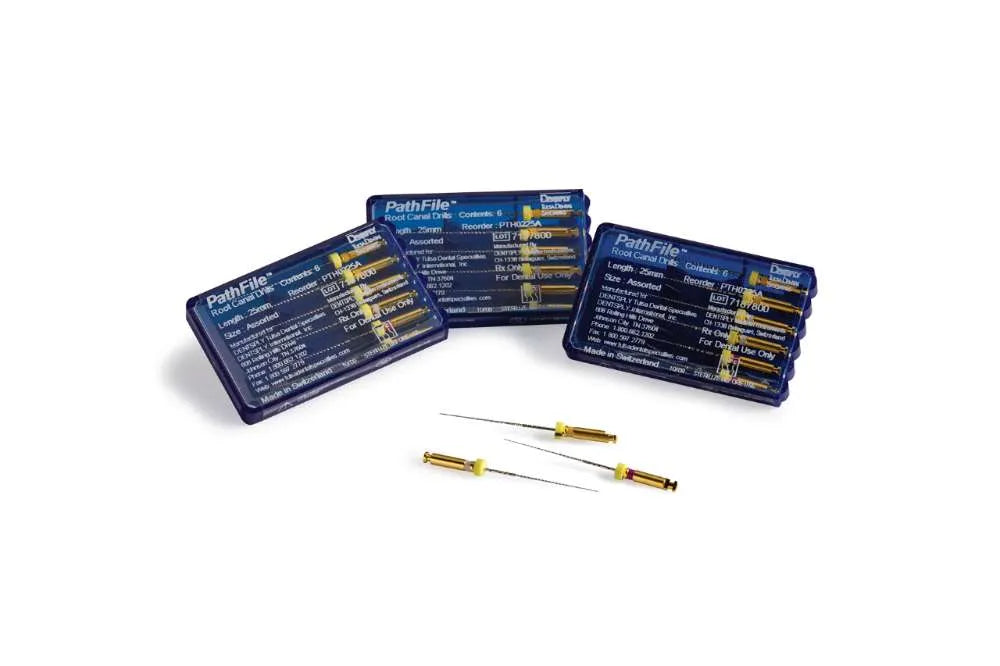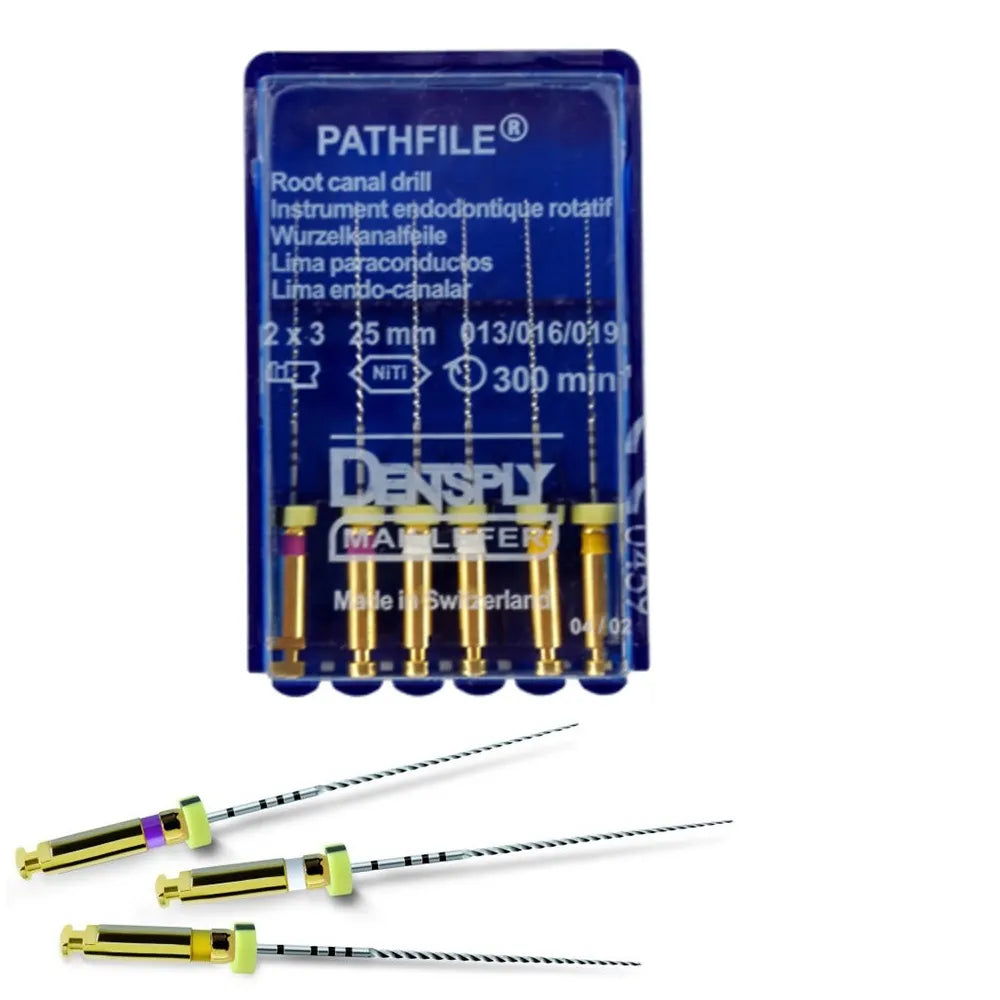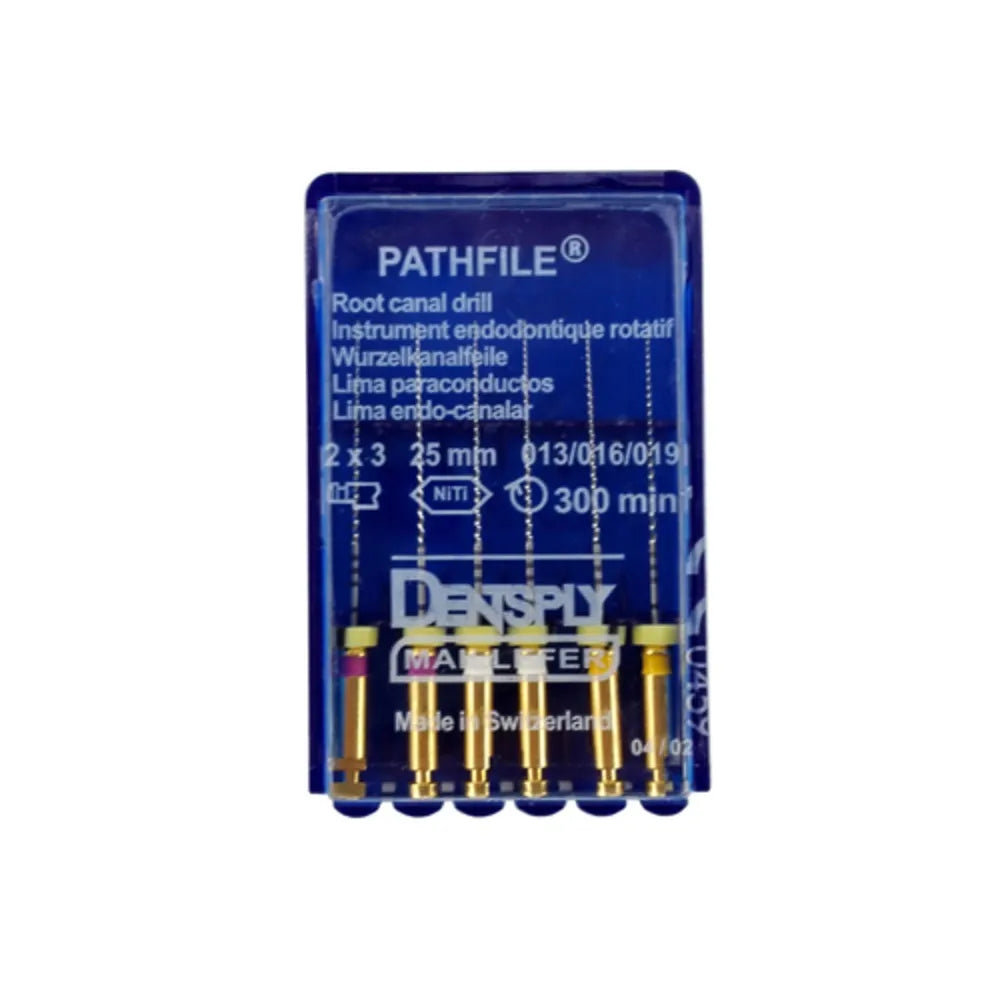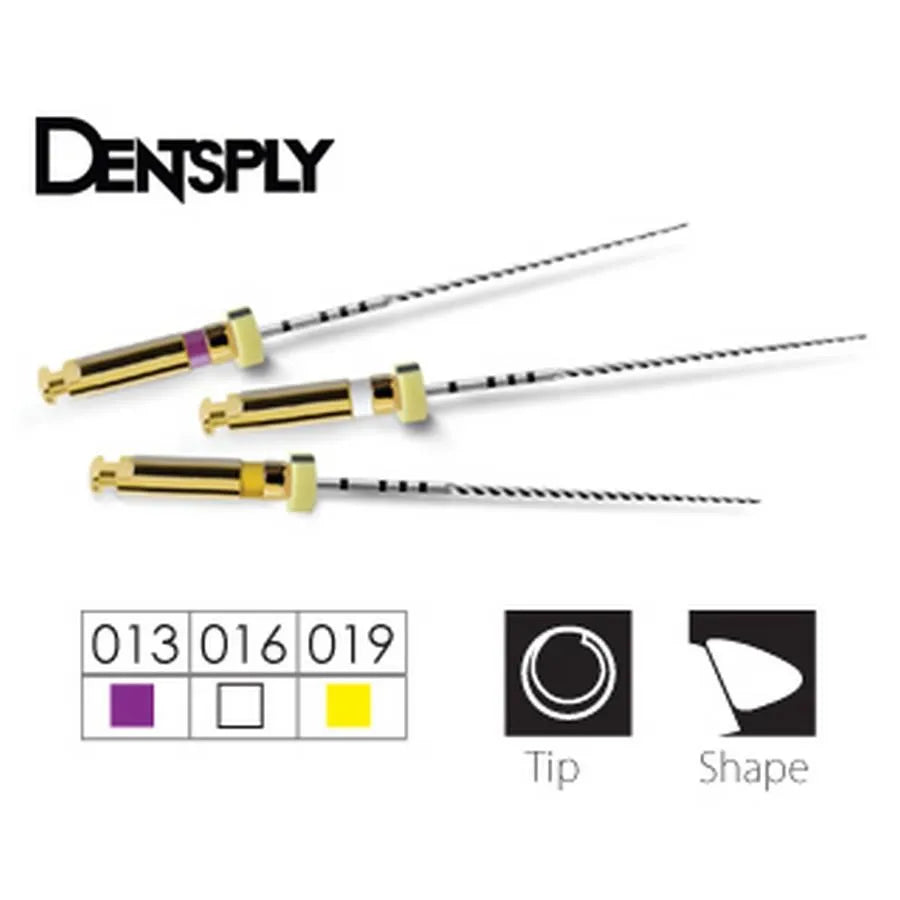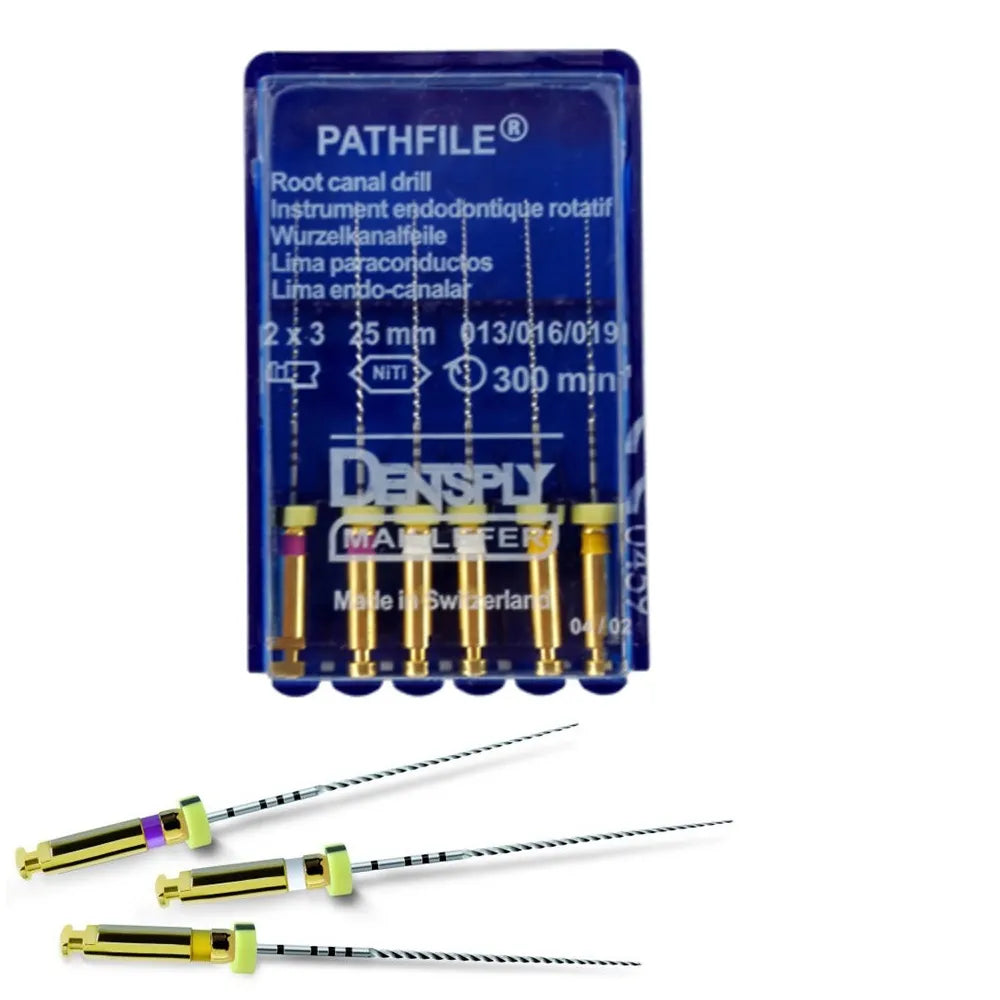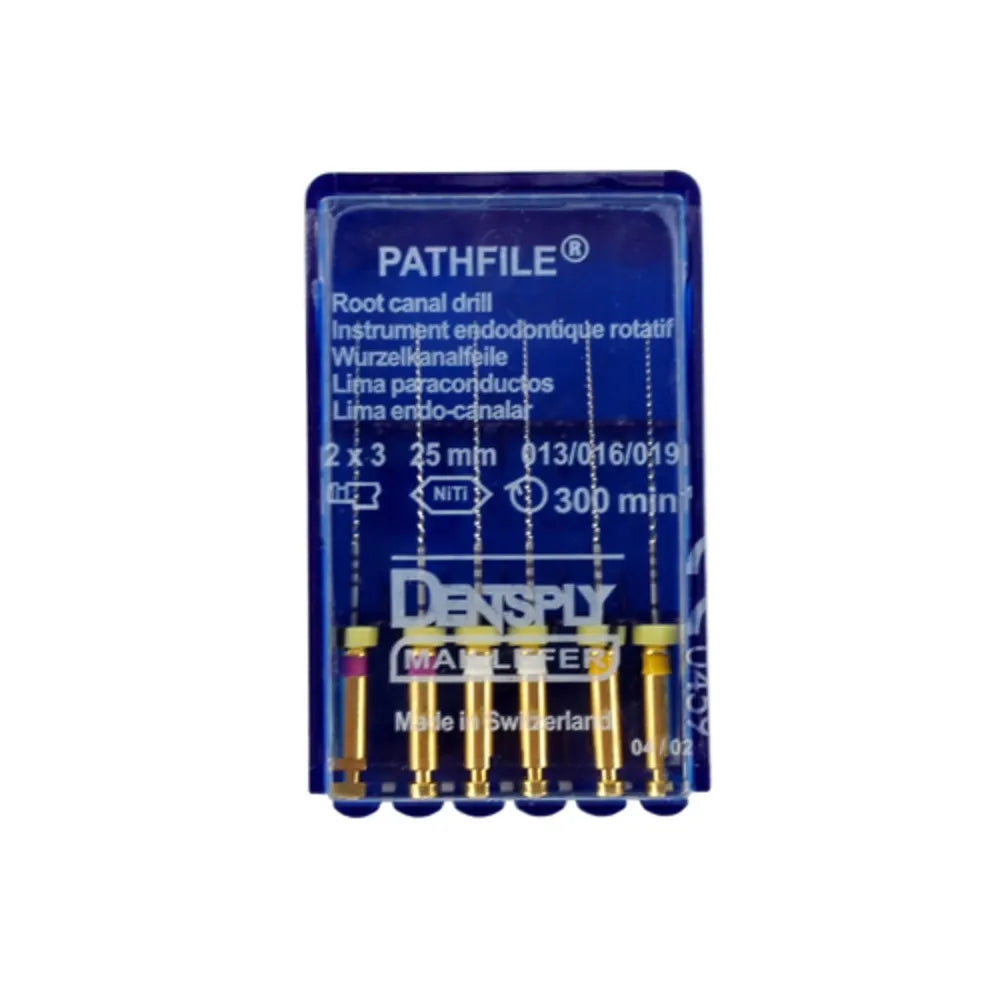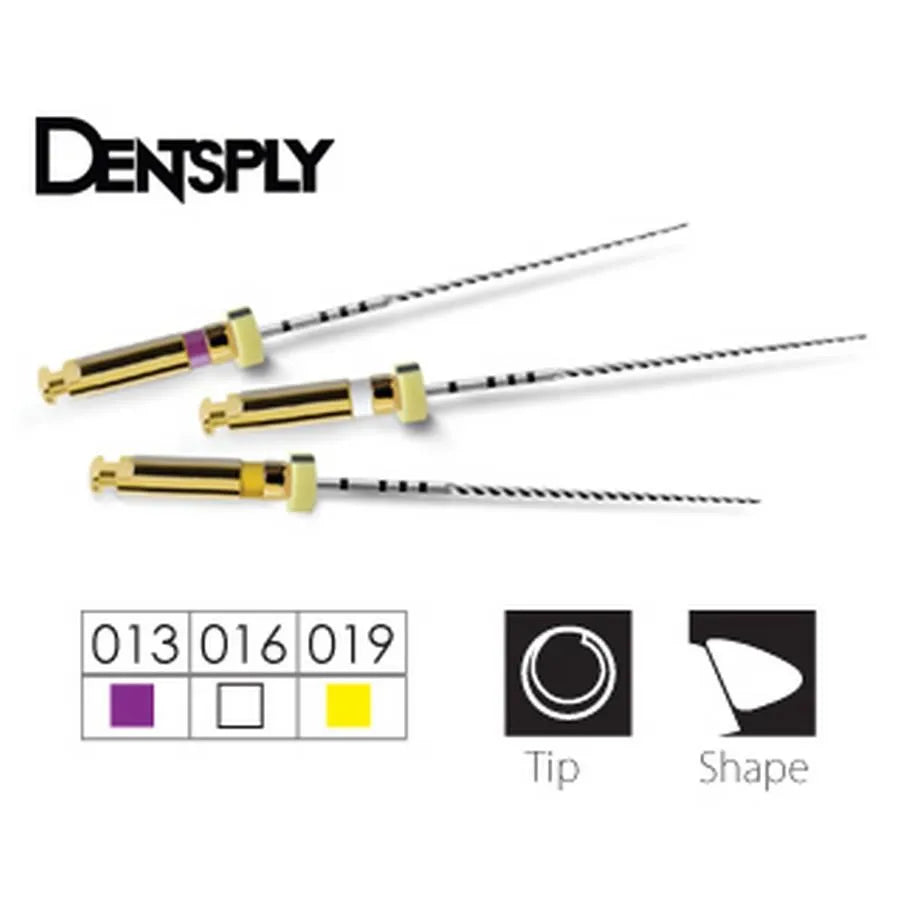Dentsply
Dentsply Rotary PathFile 25mm
Dentsply Rotary PathFile 25mm
Couldn't load pickup availability
Dentsply PathFile 25mm is a revolutionary NiTi (nickel-titanium) rotary solution designed specifically for establishing a predictable glide path in dentistry. Recognized as one of Dentistry Today's Top 100 Products, PathFile offers a range of features that enhance flexibility and resistance to cyclic fatigue, providing numerous advantages over traditional manual stainless steel files. One of the key benefits of PathFile is its remarkable flexibility, which surpasses that of manual K-files. This increased flexibility allows for smoother navigation through the intricate canal systems of teeth, reducing the risk of iatrogenic damage and improving overall treatment outcomes. By offering enhanced flexibility, PathFile ensures better adaptation to curved canals, where traditional files may struggle to reach and shape effectively. Moreover, PathFile's resistance to cyclic fatigue is significantly improved compared to manual stainless steel files. This means that the files can withstand repetitive use without experiencing structural deterioration or breakage. By maintaining their integrity, PathFile files provide consistent and reliable performance throughout the treatment procedure, contributing to more predictable and successful outcomes.
In addition to their flexibility and resistance to cyclic fatigue, PathFile files offer several other advantages over manual K-files. They provide a faster instrumentation time, enabling dental professionals to complete procedures more efficiently. This time-saving feature is particularly beneficial for complex cases or situations where multiple canals need to be treated. Furthermore, PathFile files exhibit reduced canal transportation compared to manual K-files. Canal transportation refers to the undesirable alteration of the original shape of the root canal during instrumentation. By minimizing canal transportation, PathFile ensures a more conservative approach to shaping, preserving the natural anatomy of the tooth and optimizing treatment results.
Features
Features
- Increased flexibility for better adaptation to curved canals
- Resistance to cyclic fatigue for long-lasting performance
- Reduced canal transportation, preserving natural tooth anatomy
- Faster instrumentation time, improving efficiency
- Suitable for a wide range of endodontic procedures
- Enhanced precision and predictability in establishing a glide path
- Minimizes the risk of iatrogenic damage during treatment
- Provides consistent and reliable results throughout the procedure
- Allows for smoother and more efficient shaping of root canals
Description
Description
Specification
Specification
Sizes: Taper 2%
- PathFile 1 (violet) - 13
- PathFile 2 (white) - 16
- PathFile 3 (yellow) - 19
Packaging
Packaging
- Pack of 6
Direction to use
Direction to use
- Begin by obtaining proper isolation and access to the tooth requiring treatment.
- Assess the anatomy of the canal and determine the appropriate PathFile size for the initial glide path preparation.
- Ensure that the handpiece and contra-angle are properly connected and securely tightened.
- Attach the PathFile to the handpiece, making sure it is firmly seated and aligned.
- Apply gentle but continuous apical pressure while engaging the PathFile into the canal entrance. Avoid excessive force or aggressive movements to prevent iatrogenic damage.
- Navigate the PathFile along the natural curvature of the canal, using a pecking motion if necessary to facilitate progress.
- Pay attention to any signs of resistance or binding and adjust the technique accordingly. If resistance is encountered, avoid forcing the file and consider using a smaller size or alternative technique.
- As the PathFile progresses, periodically withdraw it from the canal to remove debris and monitor the progress of the glide path.
- Continue the instrumentation process with progressively larger PathFile sizes until the desired glide path dimensions are achieved.
- Rinse the canal with an appropriate irrigating solution to remove debris and ensure cleanliness.
- After completing the glide path preparation, proceed with further endodontic procedures as necessary, such as shaping and obturation.
Additional info
Additional info
Warranty
Warranty
- This product does have any warranty.
Product Related Questions
Product Related Questions
Question : What is the advantage of using PathFile over manual stainless steel files?
Answer: A PathFile offers increased flexibility, resistance to cyclic fatigue, reduced canal transportation, and faster instrumentation time compared to manual stainless steel files. These advantages contribute to improved treatment outcomes and efficiency.
Question : How does PathFile reduce canal transportation?
Answer: PathFile's design and properties help minimize canal transportation. It follows the natural anatomy of the canal, preserving its original shape and minimizing any unnecessary alteration or widening during instrumentation.
Question : Does PathFile require special techniques or additional training?
Answer: While familiarity with rotary endodontic techniques is beneficial, PathFile can be used with standard techniques commonly employed in endodontic procedures. It is essential to follow manufacturer instructions and consider any specific recommendations for optimal usage.
Question : Is PathFile compatible with all endodontic handpieces?
Answer: PathFile is designed for compatibility with most standard endodontic handpieces. However, it is recommended to ensure proper fitting and alignment before use to maintain efficiency and prevent any potential issues during the procedure.
Question : CanPathFile be used in curved canals?
Answer: Yes, PathFile is suitable for curved canals. Its enhanced flexibility allows for better adaptation and navigation through intricate canal systems, ensuring effective shaping and treatment in challenging anatomical situations.
Question : Are there different sizes of PathFile available?
Answer: Yes, PathFile is available in various sizes to accommodate different canal dimensions and treatment requirements. It is important to select the appropriate size based on the anatomy of the tooth and desired glide path dimensions.
Share
